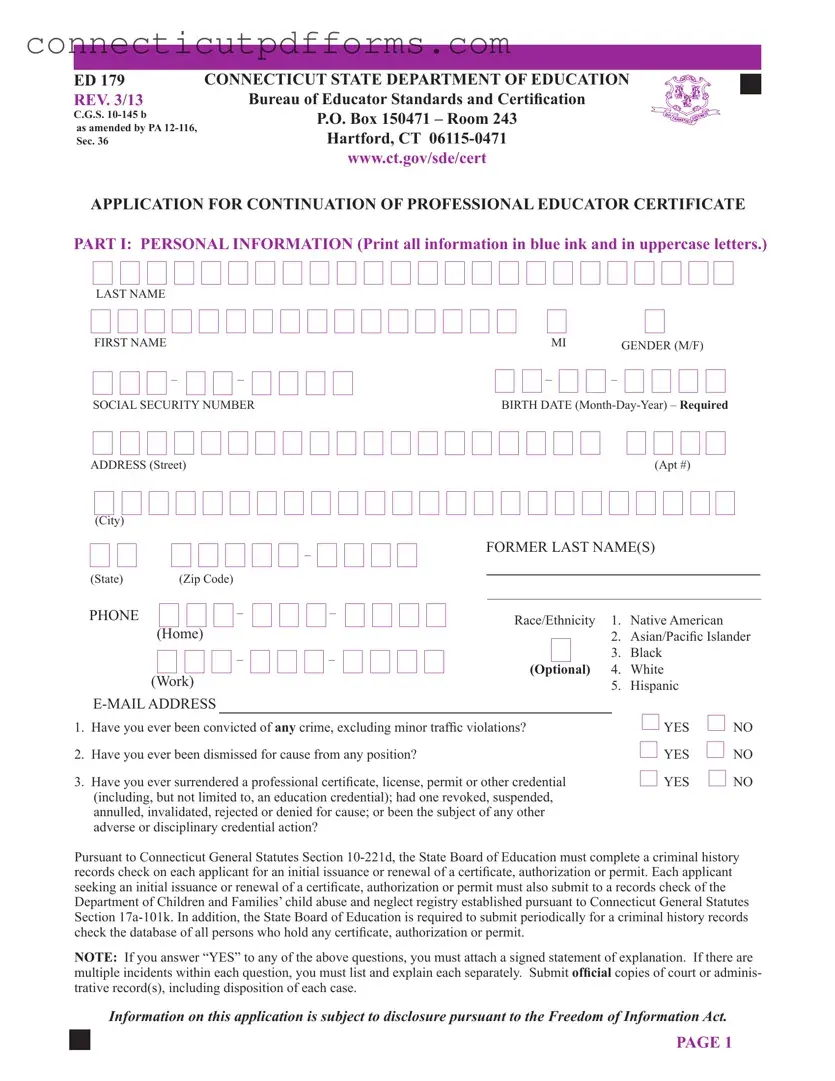Completing the ED 179 form is a critical step for educators seeking to maintain their professional certification in Connecticut. However, many applicants encounter common pitfalls that can delay or jeopardize their application. Understanding these mistakes can help ensure a smoother process.
One frequent error involves incomplete personal information. Applicants often neglect to fill in all required fields, such as their social security number or birth date. Omitting this information can lead to processing delays, as the State Board of Education may require additional documentation to verify identity.
Another common mistake is using incorrect ink color. The instructions specify that all information should be printed in blue ink. Using black or any other color can result in the form being rejected, necessitating a resubmission.
Many applicants also fail to provide a signed statement of explanation when answering "YES" to any of the background questions. This oversight can have serious consequences, as the application may be considered incomplete without the necessary documentation. Each incident must be detailed separately, which requires careful attention to ensure compliance.
In addition, neglecting to attach official documentation is a common issue. When there are incidents involving previous certifications or licenses, applicants must submit court or administrative records. Failure to include these documents can lead to immediate denial of the application.
Another mistake involves misunderstanding the employment history section. Applicants sometimes check the wrong box regarding their service under the current Professional Educator Certificate. This can misrepresent their experience and may complicate the verification process, leading to potential issues with their application.
Moreover, not completing the ED 126 form can be detrimental. Each district where the applicant has worked must have a signed ED 126 form submitted. Omitting this step can result in incomplete verification of professional experience, which is essential for the renewal process.
Some applicants also struggle with the attestation statement. They may fail to read and understand the implications of signing the statement, which certifies that all provided information is accurate. Misrepresentation, whether intentional or accidental, can lead to serious repercussions, including revocation of certification.
Lastly, failing to keep a copy of the submitted application can create problems down the line. Without a record, applicants may find it challenging to follow up on their application status or address any issues that arise during the review process.
By avoiding these common mistakes, applicants can enhance their chances of successfully renewing their Professional Educator Certificate. Thoroughly reviewing the form and following all instructions meticulously will lead to a more efficient application process.





 –
–